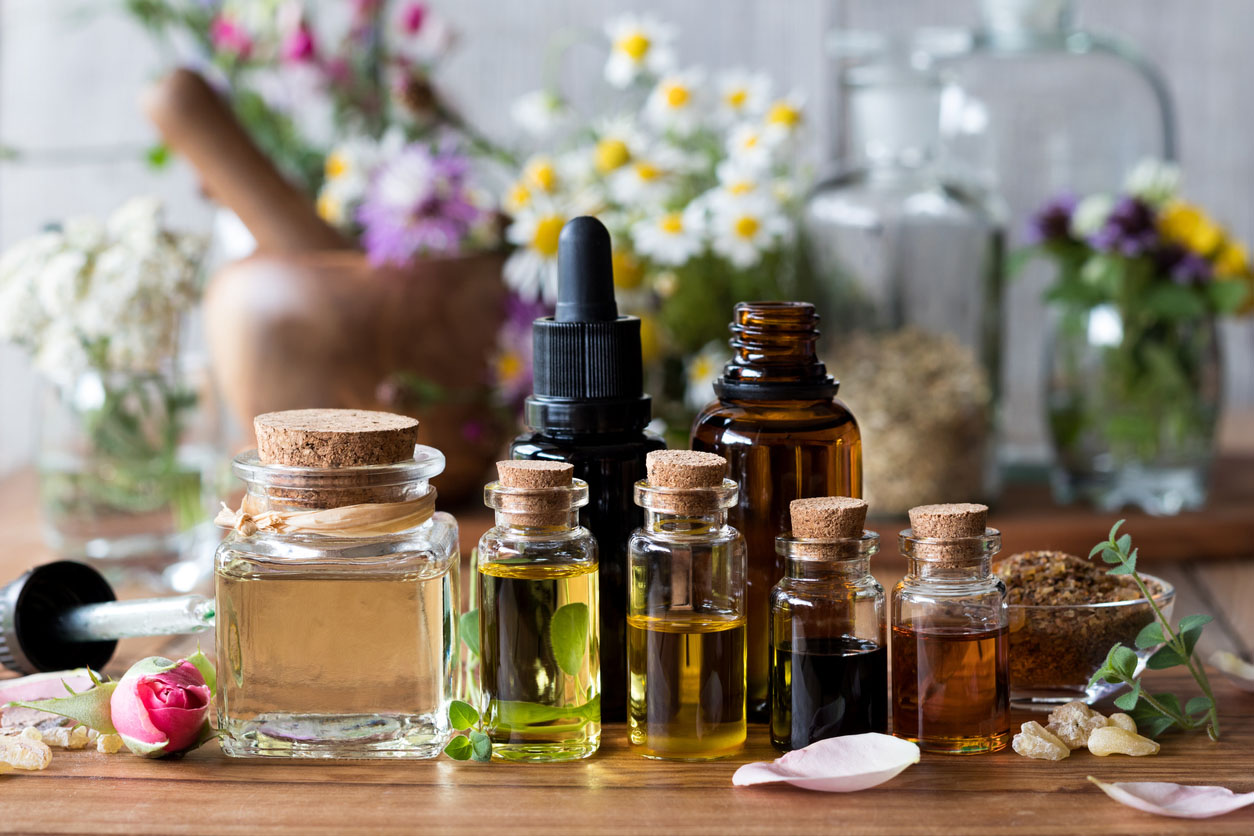How to manage stress and anxiety with aromatherapy
In a hectic world, where work and the constraints of daily life take up a lot of space, anxiety and stress are rarely inevitable. When stress becomes ubiquitous, our bodies pay the price, and it manifests itself in all sorts of ways, from insomnia and irritability to digestive problems.
Anxiety can become a disabling manifestation of stress. Stress threatens our outlook on life, causing many of us to wake up worried and "hover" throughout the day just to stay afloat. Anxious people may experience panic attacks, anxiety attacks or withdraw from society to avoid this kind of anxiety-provoking situation.
Although many people turn to medication (anxiolytics, sleeping pills, antidepressants...) to cope with all these harmful emotions, it may be useful to first turn to alternative therapies such as naturopathy. In aromatherapy, essential oils are wonderful tools that can help you to relax, they can be combined with other techniques also aimed at avoiding anxiety-provoking situations: wellness massages, foot reflexology, sophrology, yoga....
In this article, I offer you an introduction to the use of essential oils, including some tips to combat stress and anxiety:
How to diffuse anti-stress essential oils at home?
When we inhale the aroma of an essential oil, our body immediately begins to act with its molecules that pass through the olfactory system to reach our brain. At that moment, it can have a direct impact on the many systems of our body and body reactions, namely, emotions, memory, blood pressure and heart rate, breathing but also hormonal functioning. A simple inhalation of a concentrated essential oil can almost instantly trigger an action of our body, causing the production of wellness neurotransmitters such as serotonin and dopamine.
Some offices and health institutions have found that the diffusion of essential oils helps to relieve anxiety at work.
Precautions for use :
You can perfume any room in your home with an essential oil diffuser, as long as you do not exceed 30 minutes of diffusion and ventilate the room well afterwards to avoid a too saturated atmosphere.
The diffusion of essential oils is the least intrusive way. However, care must be taken in its use because certain families of essential oils can be neurotoxic (ketones including peppermint) and are therefore not recommended for diffusion. The diffusion route is prohibited in pregnant women and infants.
Ultrasonic diffusers are very successful. Indeed, ultrasounds are an effective way to use essential oils without causing denaturation of the molecules contained in the essential oils. That is to say without modifying their chemical composition.

Essential oils to diffuse against anxiety and spasmophilia:
Bergamot is one of the ideal essential oils for diffusion. It can be of good use when you feel stressed because its unique composition calms the mind and body while improving mood. Not only does its limonene content provide intense relaxation when inhaled, but its spicy citrus notes also immediately stimulate the senses. Be careful to use it with caution as it can be aggressive to the skin, it is advisable to dilute it with a vegetable oil. The bergamot is also photo-sensitizing, sun exposure is therefore strongly discouraged.
The family of esters, known for its sedative power includes chamomile, ylang-ylang, true lavender, small grain bitter orange. These essential oils help reduce stress and anxiety. They are interesting for people prone to spasmophilia, a syndrome resulting in muscle hyperexcitability, characterized by an anxious state.
Bitter orange kernel and lavender have the particularity of facilitating falling asleep and avoiding waking up at night.
How to use essential oils?
If you don't have a diffuser, you can enjoy the benefits of essential oils by becoming a little creative.
For example, if you want to be at the top for your relaxation session, put a cotton pad with the essential oil of your choice (anti-stress purpose) in your gym bag. It will open your airways for deeper breathing, keep you alert and focused, and stimulate your mood naturally.
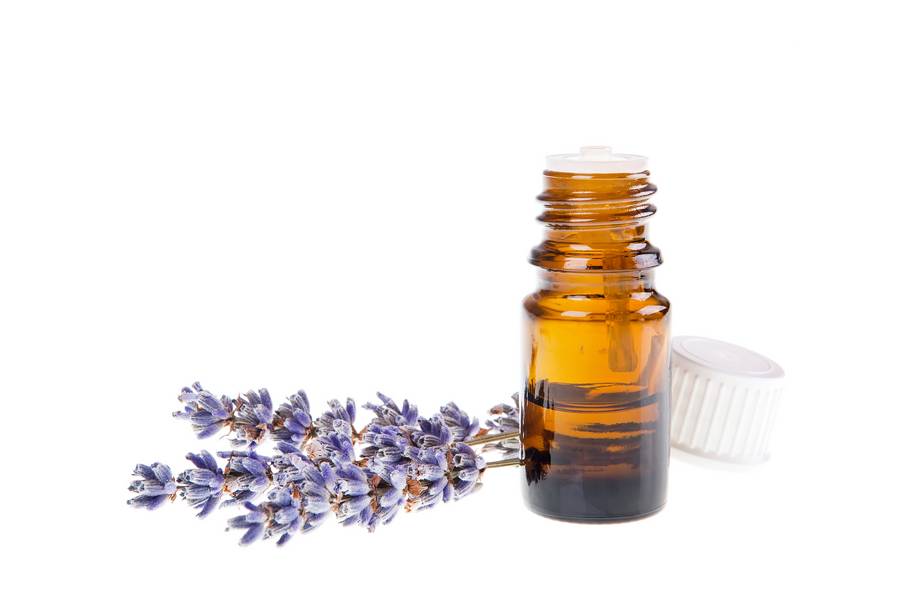
If you experience stress and anxiety while driving, you can add a drop of lavender or ylang-ylang to a clothespin and place it on your vents to relieve your nerves during a stressful drive.
Aromatherapy jewelry is also very popular: you can find diffuser necklaces with felt pads containing essential oils, whose terracotta pendants are naturally impregnated with their scent. Leather bracelets can also provide a relaxing effect throughout the day, as the pores of the wrists tend to be larger.
If you opt for these jewels, simply make sure you use an essential oil that can be placed directly on the skin (not dermocaustic) and can be diffused.
How to combine essential oils and deep breathing?
One of the easiest ways to tell our body that we are in control is to take a deep breath. When we are scared or stressed, the sympathetic nervous system is alerted: breathing speeds up, becoming shallow, our heart rate increases and our cortisol (stress hormone) levels are high. Chronic stress causes prolonged periods of these fight or flight reflexes.
Deep, slow breathing will help the body to be more relaxed, regulate the heart rate and help you feel more serene. In fact, a strong correlation can be established between the heart and the brain. One technique for regulating the body's physiological functions is cardiac coherence, based on rhythmic breathing, including a five-second abdominal inhalation and exhalation.
If you practice this type of breathing regularly, you will find that stress, anxiety and fatigue will give way to greater serenity. I recommend that you establish these small breathing rituals regularly throughout the day, especially during periods of increased stress.
Deep breathing focuses on the diaphragm, which is a muscle located in the abdomen. When you breathe in, your abdomen should inflate like a balloon; this is called "abdominal" breathing. Exhalation is when you suck in the abdomen to push the air out. Let the rhythm of your breaths in follow a steady flow of air that enters through your nostrils, spreading to the depths of your lungs, followed by equally fluid and regular breaths out through your mouth and lips.
La respiration profonde se concentre sur le diaphragme, qui est un muscle situé dans l'abdomen. Lorsque vous inspirez, votre abdomen doit se gonfler comme un ballon ; c'est ce qu'on appelle la respiration "abdominale". L'expiration consiste à aspirer l'abdomen pour expulser l'air. Laissez le rythme de vos inspirations suivre un flux constant d'air qui entre par les narines, se propageant jusqu'au fond des poumons, puis expirez de façon tout aussi fluide et régulière par la bouche et les lèvres.
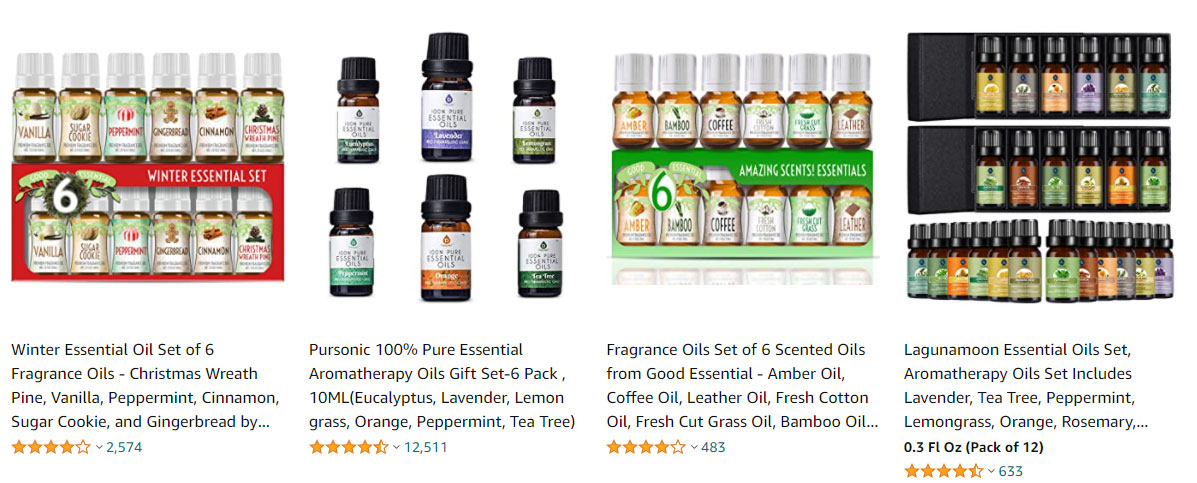
How to integrate essential oils for skin application?
Chronic stress and anxiety can keep our body in a state of constant tension, so that our muscles feel like a permanently taut elastic band, ready to break every second. Excess cortisol due to stress also stresses our sympathetic nervous system and causes the body to become more fatigued. Nowadays, we are more and more opposed to ourselves by allowing stress to impose itself. Self-massage or massage from a therapist can be a good way to relieve the effects of chronic stress, it will have even more benefits if it is accompanied by essential oils.
Topical application allows essential oils to penetrate the dermis and enter directly into the bloodstream, where they can be directed to the area of the body that needs its healing power.
Essential oils should be mixed if possible with a vegetable oil, the larger the area of application, the greater the dilution will need to be. As a general rule, cutaneous application for wellness and stress management will limit a mixture to 5% E.O. in a vegetable oil, such as sweet almond oil, calendula oil or hazelnut oil. The mixture should be applied to the wrists and solar plexus.
For a muscular massage, on a large area of the body, the back for example, dilute 10% E.O. in vegetable oil. Similarly for a large area, be careful and choose an essential oil that is not irritating to the skin. You can choose ylang-ylang, chamomile, true lavender or neroli.
It is possible to mix these essential oils with each other, as long as the correct dosage is always respected. For example, you can dilute a drop of each of these essential oils in 1 tablespoon of calendula oil and apply to the area concerned using circular movements until it is absorbed. Combine this with slow, deep breathing for optimal stress relief.
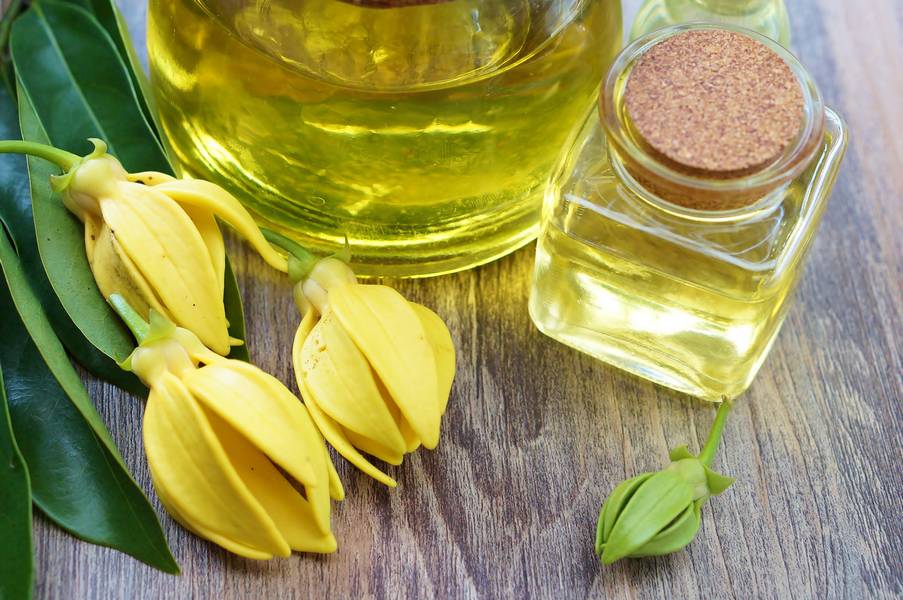
Stress and fatigue management
For stress management and lack of energy, I suggest an E.O. formula (3 drops of the mixture) to be applied on the inner side of the wrists and the solar plexus (small areas) 3 times a day:
• Tarragon essential oil : 1 drop
• Essential oil of marjoram with shell: 2 drops
• mandarin essence: 2 drops
For spasmophilia, we recommend esters with antispasmodic properties, by applying 4 to 5 drops of the following mixture to the solar plexus:
• Essential oil petit grain bigaradier: 0.5 ml
• Noble chamomile essential oil: 1 ml
• Essential oil ylang-ylang: 1 ml
To be diluted in a 50 ml bottle of hazelnut vegetable oil.
Night alarm clocks
In case of nocturnal awakenings and restless sleep, you can apply on the solar plexus and wrists before falling asleep, 4 to 5 drops of the following formula :
• Neroli essential oil: 1 ml
• Essential oil petit grain bigaradier: 0.5 ml
• Marjoram essential oil with shell: 1 ml
• To be diluted in 50 ml of hazelnut vegetable oil.
For nut allergies, replace hazelnut oil with calendula oil.
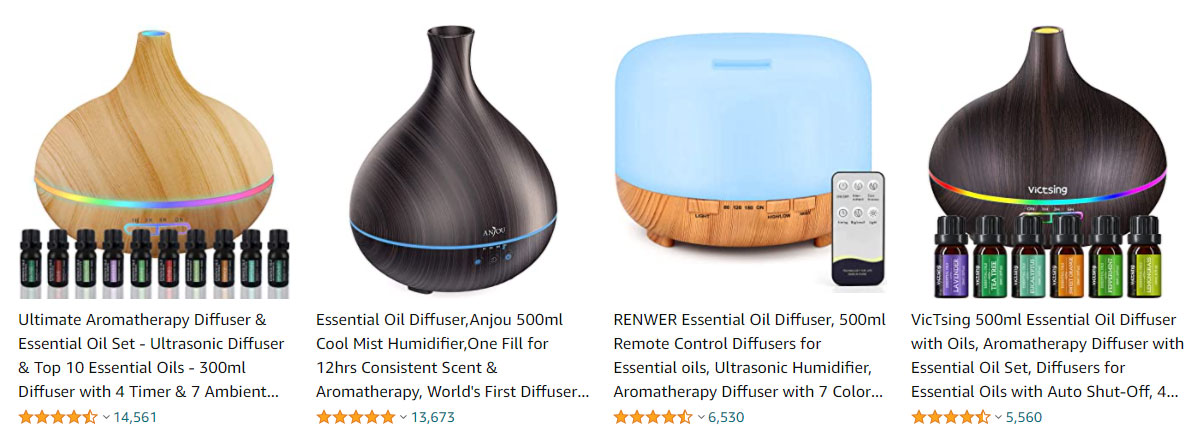
Small practical tip to apply soothing essential oils to your skin:
Keep at the bottom of your handbag or in your pocket a ball applicator (roller) with the E.O. mixture that best suits your needs. Very easy to use and to carry, this small applicator will help you to maintain your calm and reduce tension throughout the day.
As a user, the essential oils that I like to carry with me at all times are :
• Peppermint: it is a good remedy in case of migraine (to be applied lightly on the temples).
• Ylang-ylang: for its sweet scent and relaxing power.
• Lemon and bergamot: not only do these citrus fruits help to improve mood throughout the day, but they can also relieve difficult digestion or nausea.
I usually dilute my essential oils in sweet almond oil, which I particularly appreciate for its soothing and softening properties.
Advices of use of the roller :
Add a few drops of essential oils of your choice in the glass bottle and fill the rest of the container with any vegetable oil.
The roller is to be applied to the skin, inside the wrists, on the temples, sides of the neck, back of the ears or the solar plexus. Rub your wrists together and breathe in the scent of the essential oils of your choice, whenever you feel stressed or anxious, to release tension.
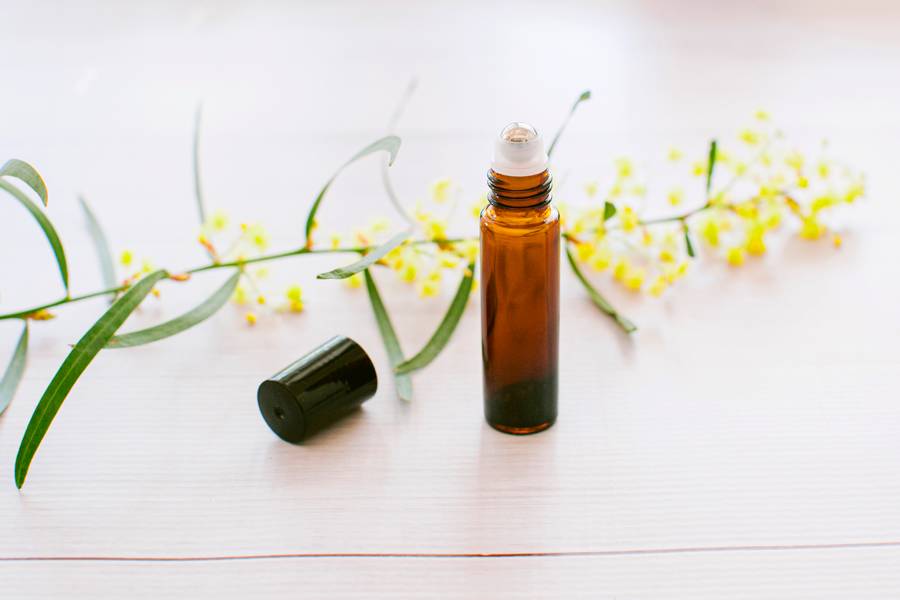
Shake well before application. Avoid rubbing around the eyes, as the menthol in peppermint can cause discomfort and strong tingling; if this happens, rinse with vegetable oil but NEVER with water!
Here is an example of an anti-stress mix that you can prepare in your roller for immediate relaxation :
- 8 drops of true lavender essential oil
- 8 drops of chamomile essential oil
- 6 drops of ylang-ylang essential oil
- 6 drops of essential oil of petit grain bigaradier
In conclusion
Aromatherapy can help maintain a better mood and harmonize body and mind. Some mild and pleasant aromas quickly achieve a sense of relaxation.
That said, chronic stress and anxiety can be symptoms of other underlying problems and may indicate a larger problem. Please be sure to discuss your condition with a trusted health care professional before beginning to use essential oils. He or she will help you treat your symptoms as well as your underlying problems.
There is no quick fix for stress or anxiety, what works for one person may not work for another. No one essential oil will work the same for every individual, so finding the right one for you is part of the process.
If you are not used to using essential oils, be sure to take them one at a time and avoid mixing them too much. At this point, you will be better able to assess how you feel throughout the day.


